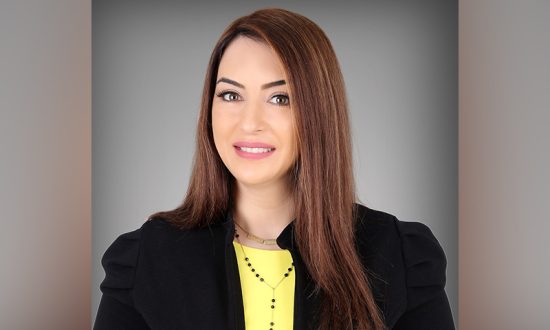Hiba Bawadi has more than 13 years-experience in education. Starting as a science teacher for early primary classes, her passion for teaching and nurturing her student’s curiosity while targeting their own emotional and academical needs helped improve her leading skills. This led her to be the “Lead Teacher” for an elementary science grade, in addition to being assigned as the “Deputy Head of Department”.
Pursuing her role, Hiba coached and mentored her team in a way that catered for all students’ needs especially SOD students. She oversees the collaboration among her team members to ensure the planning and implementation of creative and engaging lessons which are responsive to the various students’ interests and needs.
“We “teachers” change student’s lives by believing in them, and in their accomplishments no matter how slow their progress is”
The flipped classroom model is a new pedagogical approach that has recently gained much popularity in all education settings. This approach is based on reversing the class-time lecture and providing students with an avenue for active-learning and engagement. Typically, students prepare the material sent by the teacher ahead of class. As a result, class-time is devoted to hands-on activities, inquiry-based and project-based learning, as well as classroom discussions. Hence, the attention is redirected away from the teacher towards the learners which helps them gain mastery in their learning, allows more collaboration between students, and increases their engagement and motivation.
It might be difficult to inspire pupils in the classroom, especially when they are “special education” students in a regular classroom. It is challenging for those students to stay motivated throughout the teaching process because of the discrepancy between their independence level and their present grade level. As such, being familiar with the students’ strengths, needs, as well as interests is the key to increase the level of students’ motivation and engagement in the learning process.
Usually, I do apply the flipped classroom strategy in my science classroom. However, once I decided to depart from the norm, and use this strategy as a kind of informative assessment with two of my students who were “students of determination” (SOD) and guess what the results were beyond my expectations!
The first student with a social-communication disorder (SCD) had difficulty in social interactions and language use. After assigning him the role of the teacher, we recalled the lesson and planned how he will explain it to his classmates. I guided him and told him what to do as a first step. During class time, he knocked the door, entered the class confidently, greeted everyone and started explaining. He started asking his friends questions about the relationship between altitude, density, and air-pressure. The way he interacted with his friends, and the happiness I saw in his eyes were priceless. His classmates were listening joyfully, and they interacted in a way that pushed him to complete. He was able to overcome the insecurity-feelings and gained more self-confidence. When he finished everyone clapped, and then he approached me to ask: “Miss are you proud of me?”
In the following week, he approached me and asked whether he can teach his friends about the cells. I was surprised yet felt proud at the same time. He took the lead and entered the door confidently. He recapped: “what is a cell”, and “the cell theory”. Then, he told his friends the following: “Guys I want to tell you an example about the number of cells in organisms: an elephant has more cells than an ant, not because the cells are bigger”. This example means that my SCD student was able to process the material in a way that helped him gain mastery in his learning. Therefore, by seizing the chance to lead, my student was able to overcome all his insecurities, which was brilliant.
The other student with “dyslexia”, has a short memory and struggles in reading, writing, and spelling. I encouraged him to take the role of the teacher by giving him a simple task. The aim was to let him believe that he can present his work even though it is difficult for him to read and write. As such, I asked him to orally recall with his friends the layers of the atmosphere, and then ask his friends questions about the other layers. I also asked him to write on the board only the first letter of the other layer, since he can’t spell the full word. In this way he learned from them while taking the lead at the same time. He was smiling proudly when all his classmates were engaged and collaborating. This incident increased his self-confidence and well-being which was also reflected in his overall performance in the following weeks. Now, every time I enter the class, the first thing I see is his beautiful smile waiting me to assign him a new role.
I personally consider those two stories success stories which are worth mentioning. Breaking the routine associated with the flipped classroom model helped me respond to my students’ needs, and this responsiveness was behind my students’ success! Never underestimate your students’ abilities no matter how slow their progress is.
To conclude, the diversity of methodologies used to involve students in the learning process has increased across the board. Although there is little data on the use of flipped classroom model with students of learning disabilities yet implementing this methodology in a classroom can be advantageous. Those students will have a chance to better interact with their classmates, take the lead, increase their self-esteem and self-confidence. Moreover, they will take up the burden of learning after the teacher. I believe that in education there is no “one-size fits all”. Each child is unique in a way or another. That’s why, teachers should be responsive to their students’ needs, and use differentiated instruction strategies accordingly. This will definitely help students succeed in their learning process!




